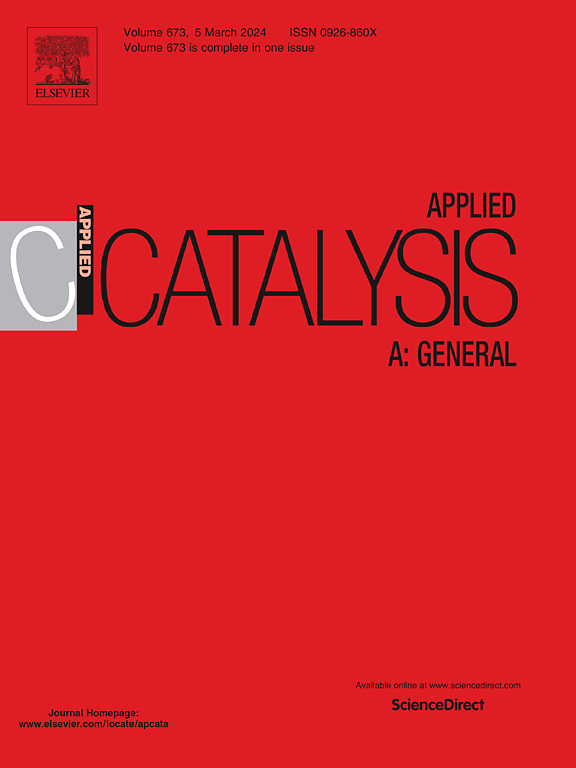通过表面掺入铋来调整WO3对反应物的吸附以增强对乙醛的光催化降解
IF 4.7
2区 化学
Q2 CHEMISTRY, PHYSICAL
引用次数: 0
摘要
活性氧(ROS)是光催化技术去除室内挥发性有机物的重要手段。然而,在可见光下产生丰富的ROS仍然具有挑战性,导致光催化性能较差。在此,我们报道了一种铋修饰的氧化钨(WO3-Bi)光催化剂,该催化剂在可见光驱动下降解乙醛(一种主要的室内空气污染物)方面具有增强的性能。将铋原子原子掺杂到WO3表面,其较强的Bi-O吸附强度有利于水和氧的吸附,提供丰富的ROS。机理研究表明,乙醛的光催化氧化涉及乙酸C-C分解成甲醇,然后完全消除。这些结果表明,光催化剂的表面修饰在改善ROS生成和光催化性能方面起着关键作用,为可见光下室内空气净化提供了一种稳健且可持续的解决方案。本文章由计算机程序翻译,如有差异,请以英文原文为准。
Tailoring reactant adsorption on WO3 via surface bismuth incorporation for enhanced photocatalytic degradation of acetaldehyde
The reactive oxygen species (ROS) are of paramount importance for indoor volatile organic compounds removal through photocatalytic technology. However, generating abundant ROS under visible light remains challenging, resulting in the poor photocatalytic performance. Herein, we report a bismuth-modified tungsten oxide (WO3-Bi) photocatalyst with enhanced performance in the visible-light-driven degradation of acetaldehyde, a major indoor air pollutant. Bismuth atoms are atomically doped onto WO3 surface, in which the strong Bi-O adsorption strength facilitates the water and oxygen adsorption to provide abundant ROS. Mechanistic investigations reveal that the photocatalytic oxidation of acetaldehyde involves the C-C breaking of acetic acid into methanol, followed by the complete elimination. These results demonstrate that the surface modification in photocatalyst plays a pivotal role in improving ROS generation and photocatalytic performance, offering a robust and sustainable solution for indoor air purification under visible light.
求助全文
通过发布文献求助,成功后即可免费获取论文全文。
去求助
来源期刊

Applied Catalysis A: General
化学-环境科学
CiteScore
9.00
自引率
5.50%
发文量
415
审稿时长
24 days
期刊介绍:
Applied Catalysis A: General publishes original papers on all aspects of catalysis of basic and practical interest to chemical scientists in both industrial and academic fields, with an emphasis onnew understanding of catalysts and catalytic reactions, new catalytic materials, new techniques, and new processes, especially those that have potential practical implications.
Papers that report results of a thorough study or optimization of systems or processes that are well understood, widely studied, or minor variations of known ones are discouraged. Authors should include statements in a separate section "Justification for Publication" of how the manuscript fits the scope of the journal in the cover letter to the editors. Submissions without such justification will be rejected without review.
 求助内容:
求助内容: 应助结果提醒方式:
应助结果提醒方式:


